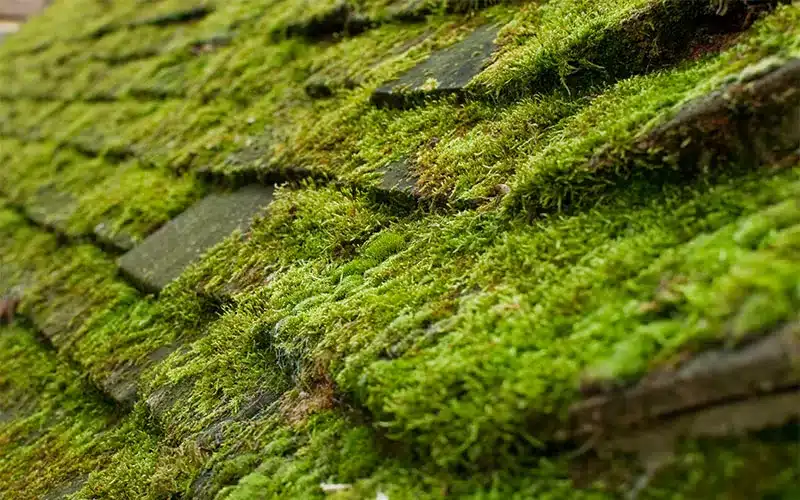When living in an area with high humidity, it’s possible your roof is covered with lichens and green moss. Moss can grow on any type of roofing material and affects its structural stability. The growth of moss also indicates that you have water damage on the roof. Often moss acts like a sponge and absorbs water which decreases your roof’s capability to drain water.
Moss can also grow at the shingles’ edge and rot the entire roof. Therefore, if you spot the growth of moss, it’s crucial to remove it at the earliest. Moss typically grows in those areas of the roof that aren’t exposed to sunlight.
When it rains, lichen and moss will soak and retain water, thereby creating wet conditions on the roof. When not removed in time, moss can grow under the shingles and cause water damage. Here are some essential aspects to know about moss removal from roofs.
What is Moss?
To boost your property’s value, overhead greenery should only be limited to leaves. If moss is covering the entire perimeter of your roof, it’s high time to plan and act. Moss typically grows in areas unexposed to the sun. Therefore, it can develop and spread rapidly on the tree-shaded regions of your roof.
Moss can also fill in the blank spaces between tiles and shingles. They can reach under and lift the roofing materials. It allows rainwater and other external elements to enter the roof’s internal structure and contribute to degradation.
The moss removal process is relatively more straightforward with a suitable set of tools. But if you don’t have any experience, consulting a roof moss removal professional is the best option. After removing the moss, you should treat the roof with chemical sprays to prevent the moss from growing.
Is it Crucial to Replace a Mossy Roof?
It is not necessary to replace a mossy roof. Moss growing on the roof doesn’t indicate that it has sustained irreversible damage. However, moss and lichen can be an issue if you allow them to grow unchecked. If there is growth of moss on your roof, don’t panic. A mossy roof doesn’t imply that you have to change it completely.
Removing moss can also help in restoring the aesthetic appeal of your property. Professional and experienced roofers have the skills to remove moss with minimal downtime. Moss removal should be executed once or twice a year.
How to Clean Moss off Your Roof?
The presence of moss on your roof can lead to long-term issues. Therefore, you must remove it at the earliest to prevent severe problems. If you are not seeking any professional help, refrain from using chemical sprays.
A solution comprising water and household bleach in a 1:1 ratio is effective in eliminating moss from your roof. You must let this homemade mixture soak for at least 30 minutes. Remember to rinse the solution with low water pressure.
Invest in a Good-Quality Brush and Trowel
Besides using household bleach, you can invest in a stiff brush and trowel. At times, manually scraping the moss from the roof can be effective. Ensure that you scrape the roof’s surface on a dry day. The homeowner should be confident in accessing the roof.
Preventive Maintenance Tips to Keep Your Roof Moss Free
Irrespective of the moss removal methods you choose, it is crucial to refer to the preventive maintenance tips. Here are some of the standard preventative maintenance tips you must know.
- Trim the overhanging branches covering your roof
- Ensure that your roof has a proper drainage system to keep it moss-free
- Maintain the gutters of your property
- Conduct periodic inspections of the roof by consulting with professionals
- If algae and moss are expected in your area, ask for expert input from the roofing contractor
Which is the Best Technique to Eliminate Moss from your Roof?
When left unattended, moss can cause some serious damage to your roof. If your roof is moss-covered for more than three months, don’t try to remove it on your own. You must reach out to an experienced roofing expert.
Experienced roofing contractors often provide free roof inspections to calculate the overall damage. Moreover, moss usually affects the structural stability of the roof. You must not risk your safety and walk on an unstable roof to save a few dollars.








